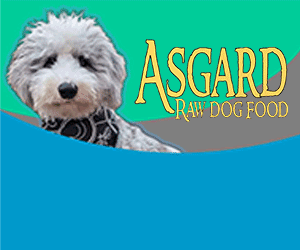If you adopted a dog or purchased a puppy, balanced training is essential for having a happy life with your canine companion. Dogs are very intelligent and willing to please but they need a leader and structure. Did you know that 3.9 million dogs are surrendered to shelters each year? Nearly half had some informal training, and once in the shelter at least 20 percent of dogs are returned to a shelter within a few months.
The most common reasons for taking or returning a dog to a shelter include behavioral issues such as: fear, shyness, dominance, aggression, excessive barking, jumping, leash pulling, chewing or mouthing. Many of these behaviors can be corrected with training and structure over time.
Dogs learn quickly what they can to do get our attention. Ignoring bad behaviors will teach some dogs that it will not get them attention and the behavior will stop. That same approach with other dogs can show them they must need to bark louder, jump higher, paw harder, or nip more to get attention. Dogs in the second scenario are often the ones who find themselves in shelters.
Like people, dogs learn differently; some need more praise while others need more structure. It depends on the dog’s energy, motivation, drive and behaviors. For training success you must learn to read your dog; know when to help, when to push and how to time your corrections and rewards. For example, if a dog is jumping or barking and you offer a treat (to “distract” the dog and stop the behavior) you likely rewarded that behavior in the dog’s mind. Likewise, if you have a shy dog and you are using treats to “encourage” a behavior but the dog is still nervous you may be rewarding the nervous energy, rather than the success of a new exercise – it depends on the timing and the dog’s learning style. Do you have sufficient training experience to know the difference?
When timing corrections or rewards you must understand how dogs communicate with each other and with us. Body language, tone and touch are used by dogs in positive or corrective ways to communicate their energy. Clear communication is one key to successful training.
Our primary tool for communication is our voice (probably followed closely by text messages) but a dog’s primary tool of communication is body language. Dogs use postures and positions to communicate playfulness, engagement, attention, aggression, dominance, fear and submissiveness. Head position, tail position and ear position, for example, are like words or phrases to other dogs. Well socialized dogs learn to read different body postures and can interact with other dogs and people because they have a good “vocabulary” of postures. What do you look like when you give your dog a command?
Dogs use different tonal inflections as well. A high-pitched bark typically elicits play, while a lower bark can be an alert or warning. We use our voices to praise our dogs as well as correct them. Our praise tone is different than the tone we use when we tell them “No” or “bad dog”. They understand our tone more than our words. (There are some dogs with extensive word vocabularies, another topic altogether).
Finally, touch can be positive or corrective. Positive touches between dogs include licking, nuzzling, play biting, and pawing. Corrective touches are used to create structure and they aren’t necessarily aggressive in nature, but they can be. We use touch in a variety of ways when we train, the most obvious is petting. When you pull on your leash, flat collar, martingale, training collar, harness, or gentle leader you are providing a physical pressure to your dog (interpreted by your dog as a corrective touch). We can also tap our dogs on their heads, or shoulders to help get their attention when they are distracted by something, much like you would do to another person.
Finding the right balance of positive and corrective body language, tone and touch is different for each dog. When you encounter unwanted behaviors that you cannot quickly address on your own, find a trainer who will demonstrate how and why they will use different techniques to address specific issues you are facing with your dog. Attention around distractions is the most common training need, and treats often fail here because energy or instincts take over. You are not alone. Do not wait until you can’t deal with a bad behavior any more – start early for best results.
Sit Means Sit Pittsburgh serves the greater South Hills and airport areas and offers free demonstrations, private lessons, group classes, puppy classes, and jump-start packages tailored to your needs. Call 412-345-1748 or visit www.pittsburgh.sitmeanssit.com to schedule a free consultation.
Lisa Pierce
Owner/Head Trainer
Sit Means Sit Dog Training, Pittsburgh
—
Potential pull quotes:
Like people, dogs learn differently; some need more praise while others need more structure. It depends on the dog’s energy, motivation, drive and behaviors.
Dogs use body language, tones and touch in positive and corrective ways to communicate their energy.
Finding the right balance of positive and corrective body language, tone and touch is different for each dog.
—
Layout considerations:
Last paragraph could also be a “sidebar” or separated in a colored box from the main text, depending on your layout needs.



